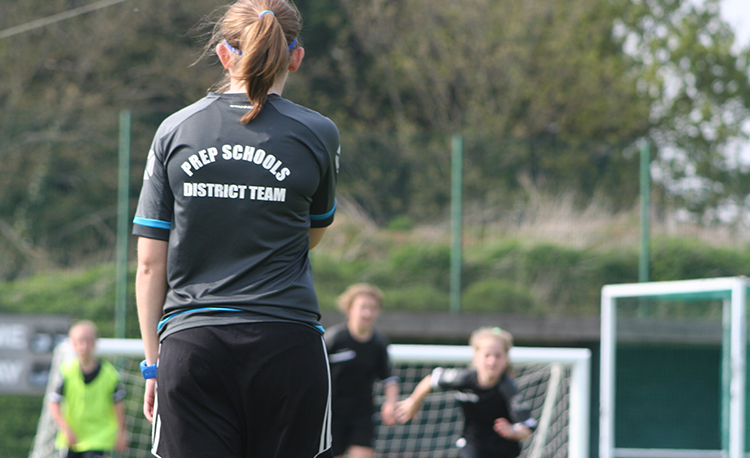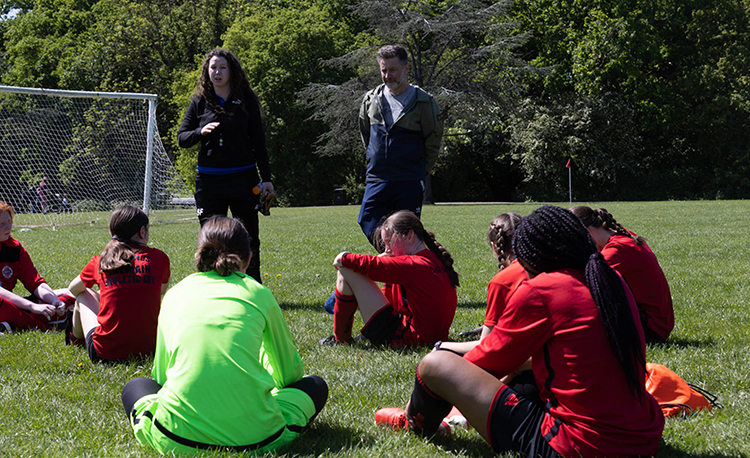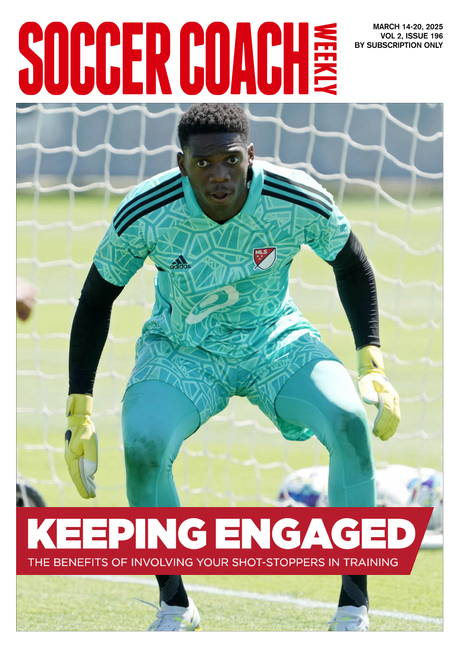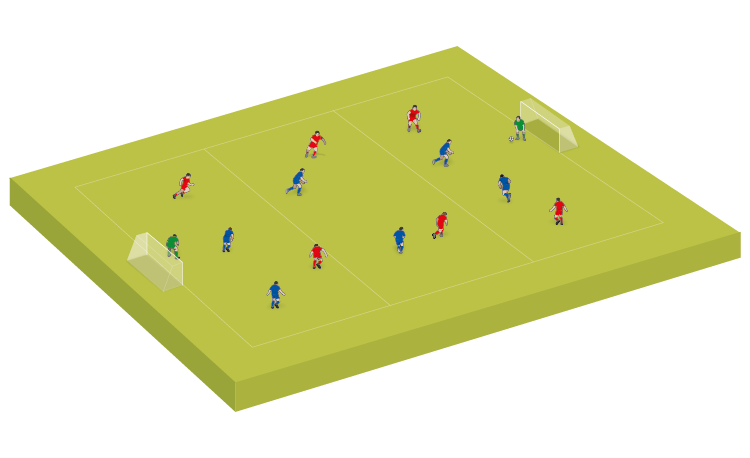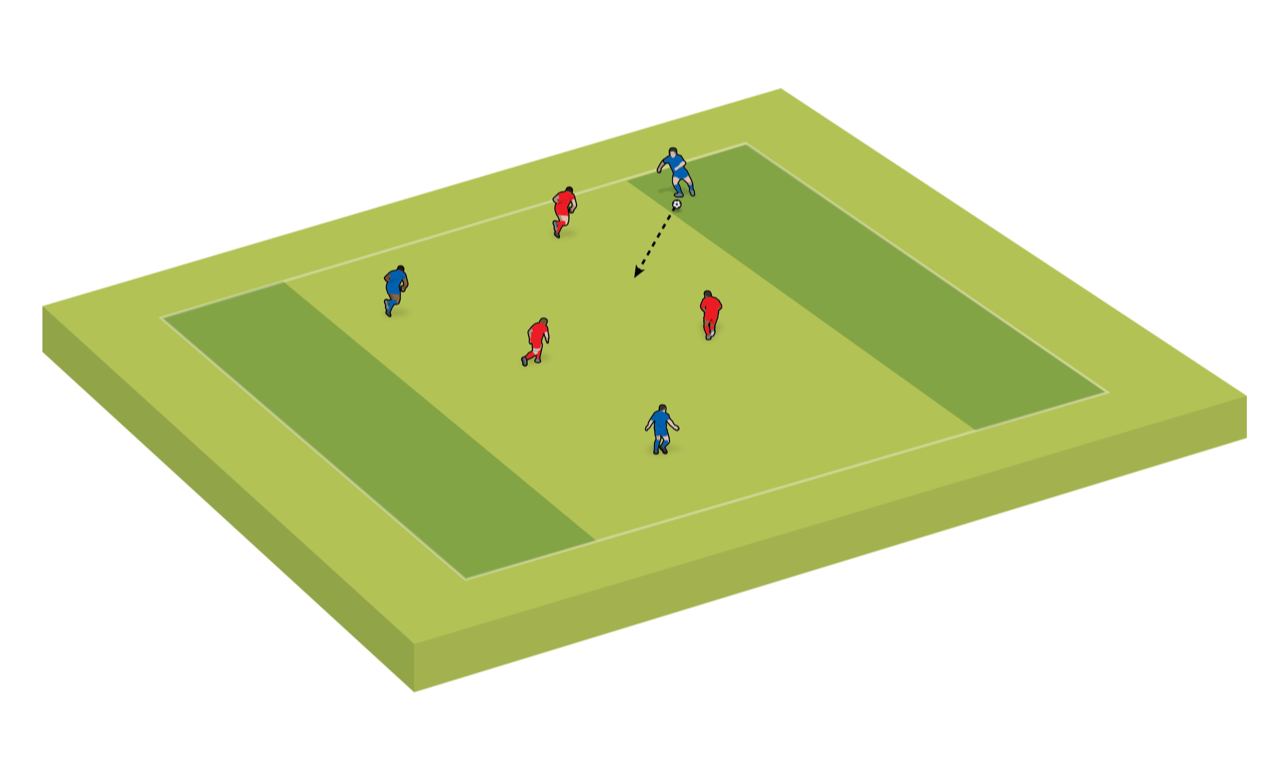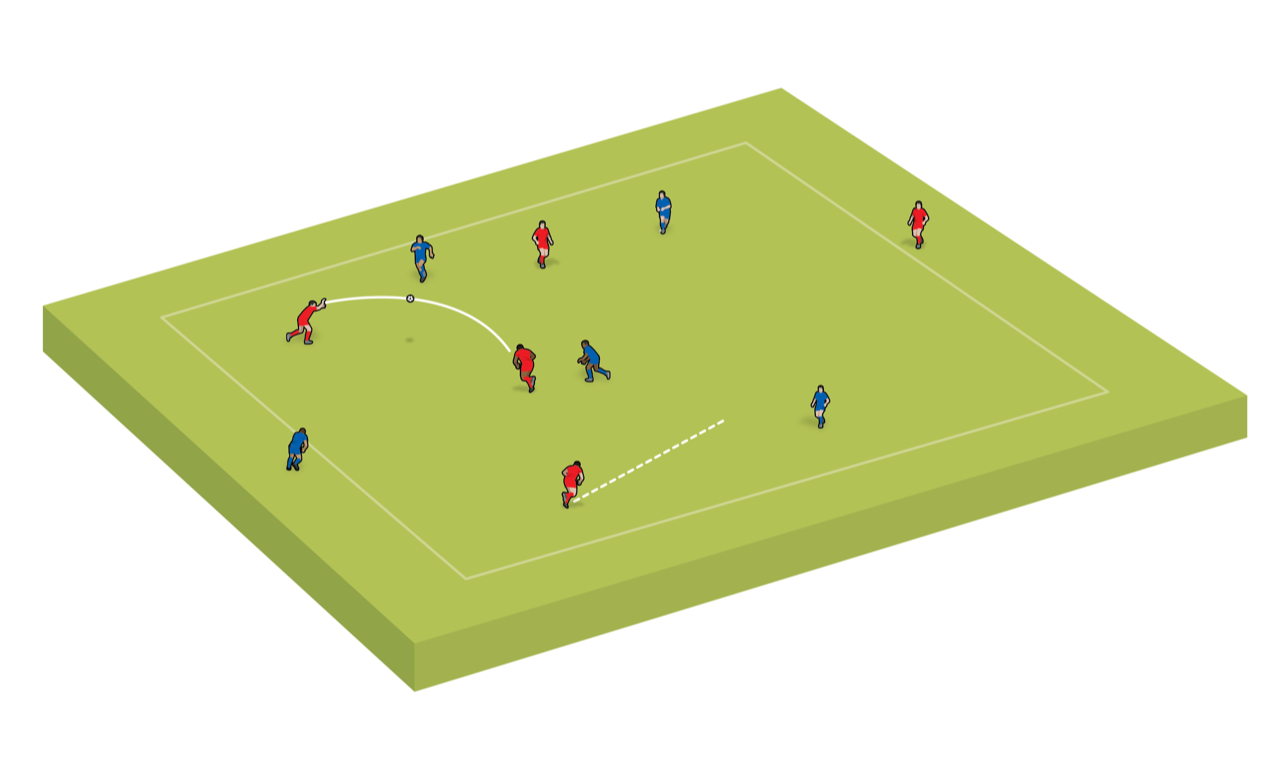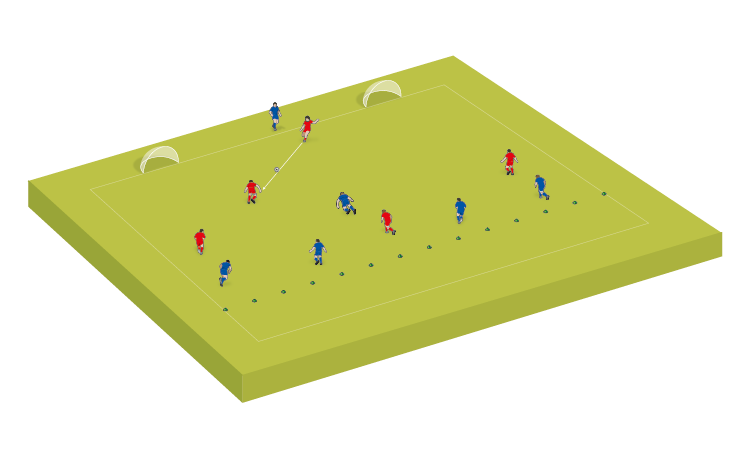Defence mechanisms
How do you teach the basics - and the more advanced techniques - of one-v-one defending to young players? Two of our in-house coaches give their tips...
Attackers always want to isolate defenders by getting them into a one-v-one situation.
The player with the ball has the agency to act - a defender is often left choosing between a risky pre-emptive move or a reactive one, which keeps them on the back foot.
But well-coached defenders know there is a pro-active choice - to engage and steal the ball, or to delay while support arrives.
How do you introduce the techniques and the decision making to young players? We asked two of our resident coaches - who coach players at very different stages of development - for their advice...
U7s BOYS’ COACH - Hannah Duncan
When introducing 1v1 defending to the foundation phase (ages 5-11), I like to use the ‘Three Ss’ – shut down, slow down, SURF!
I find this a really effective way of getting the kids to remember the basics – and they all love getting on their surfboard too. Some coaches may add ‘sit down’ before ‘SURF!’, but I personally feel the idea of bending knees and getting low is covered within the idea of surfing.
As a breakdown, this is how it should look:
Shut down – close the gap between yourself and your opponent as quickly as you can.
Slow down – make sure you slow down and put the brakes on when you’re about an arm’s length away, otherwise it will be easy for the attacker to go straight past you.
SURF! – Bend knees/get low (‘sit down’), get ‘side-on’ to opponent.
A good introduction can be a fun warm-up of ‘knee tag’ in pairs. This encourages key aspects of 1v1 defending – getting low, side-on, light on toes, anticipation and spotting opportunities to ‘attack’ (win the ball in a game situation).
U13s GIRLS’ COACH - Steph Fairbairn
Related Files
When coaching 1v1 defending to the youth-development phase players (aged 12-16), I try to focus on equipping them to make the best decision in every situation.
We want players to be able to quickly assess whether they should attempt to steal the ball or delay the play.
This means making sure they have an awareness of where their teammates are and an ability to read and respond to the speed and body shape of their opponent.
Key skills include scanning, using your body shape to usher players backwards or to the side, using your back leg to pivot, being on your toes, and being able to run backwards and shuffle sideways.
One drill I really like is having a defender starting on the edge of the penalty box, and two other defenders starting on the halfway line alongside an attacker. On the whistle, the attacker runs towards the defender and attempts to take them on and score into the open goal behind them.
The whistle is blown for a second time after 20 seconds (this can be adjusted for difficulty levels) and the two defenders on the halfway line must sprint back to help.
The defender wins a point for stealing the ball, or for holding the player off long enough for their supporting defenders to get back. The attacker wins a point for scoring.
Newsletter Sign Up
Coaches Testimonials

Gerald Kearney, Downtown Las Vegas Soccer Club

Paul Butler, Florida, USA

Rick Shields, Springboro, USA

Tony Green, Pierrefonds Titans, Quebec, Canada
Subscribe Today
Discover the simple way to become a more effective, more successful soccer coach
In a recent survey 89% of subscribers said Soccer Coach Weekly makes them more confident, 91% said Soccer Coach Weekly makes them a more effective coach and 93% said Soccer Coach Weekly makes them more inspired.
*includes 3 coaching manuals
Get Weekly Inspiration
All the latest techniques and approaches
Soccer Coach Weekly offers proven and easy to use soccer drills, coaching sessions, practice plans, small-sided games, warm-ups, training tips and advice.
We've been at the cutting edge of soccer coaching since we launched in 2007, creating resources for the grassroots youth coach, following best practice from around the world and insights from the professional game.

